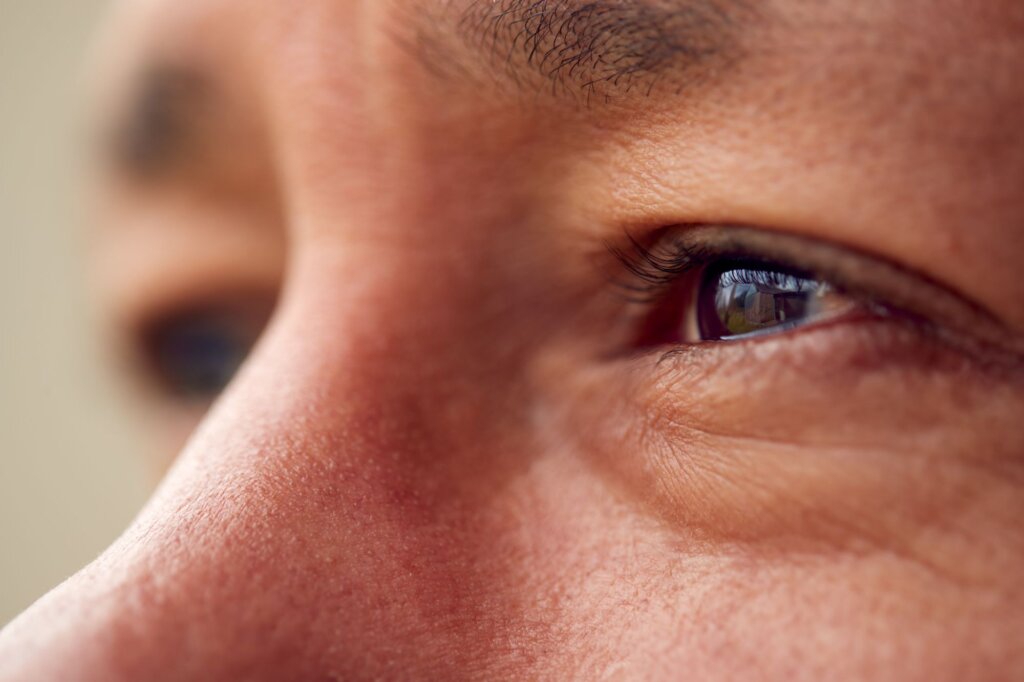Have you ever noticed tiny dots, threads, or cobweb-like shapes drifting across your field of vision? These visual specks are called eye floaters, and while they’re often harmless, they can sometimes be a sign of an eye condition that needs quick attention.
What Are Eye Floaters?
Floaters are small clusters of collagen fibers or cells that form inside the vitreous, which is the clear, gel-like substance that fills the inside of your eye. As light passes through the eye, these tiny particles can cast little shadows on the retina, which is what creates those floating shapes you see.
They’re most noticeable when you’re looking at something bright, like a clear blue sky or a white computer screen. While floaters can be annoying, they can fade or become less noticeable over time as your brain learns to ignore them.

What Causes Eye Floaters?
Most floaters develop as a natural part of aging. After about age 50, the vitreous starts to shrink and separate slightly from the retina—a process known as posterior vitreous detachment (PVD). This change is normal and usually doesn’t threaten your vision.
However, other factors can increase your risk of floaters, including:
- Eye injuries
- Nearsightedness (myopia)
- Eye inflammation (uveitis)
- Diabetic eye disease
- Previous eye surgery
Floaters can appear in one or both eyes and may seem to move when your eyes move, like they’re darting away when you try to look directly at them.
When Are Floaters Normal?
For most people, occasional floaters are harmless. If they’ve been stable for months or years and aren’t affecting your ability to see clearly, there’s usually no cause for concern. Some people notice them more after long hours on digital devices, driving while it’s bright outside, or during periods of eye strain.
That said, it’s important to pay attention to any changes. A sudden increase in the number or size of floaters could signal a more serious issue that needs immediate care.
Warning Signs That Require Immediate Attention
Call your eye doctor or seek urgent care if you notice any of these symptoms:
- A sudden increase in floaters
- Flashes of light in your peripheral vision
- A shadow like a dark curtain closing across your vision
- Blurred or distorted vision
These changes could indicate a retinal tear or retinal detachment, both of which are medical emergencies. Quick treatment can prevent permanent vision loss.
Can Eye Floaters Be Treated?
In most cases, no special treatment is needed. Over time, floaters can become less noticeable as they settle in the vitreous or your brain adapts. However, if they significantly interfere with your vision, there are options to discuss with your eye doctor, such as:
- Laser therapy – This option uses a focused beam to break up floaters, making them less visible.
- Vitrectomy – This surgical procedure involves removing the vitreous and replacing it with a clear solution. The procedure is typically reserved for severe cases.
Always consult an ophthalmologist before considering treatment, as these procedures aren’t right for everyone.
Keeping Your Vision Healthy
While most floaters are harmless, any sudden or dramatic change in your vision should be checked promptly. Routine comprehensive eye exams, especially as you age, can detect floaters and other eye conditions early.
To support better eye health:
- Take regular screen breaks.
- Wear sunglasses to protect your eyes from UV rays.
- Maintain a healthy diet rich in vitamins A, C, and E.
- Manage other health conditions you may have, like diabetes.
Floaters are a normal part of the aging process for most people, but sudden changes shouldn’t be ignored. Paying attention to your eyes and scheduling regular exams with your local eye care provider is the best way to protect your vision.